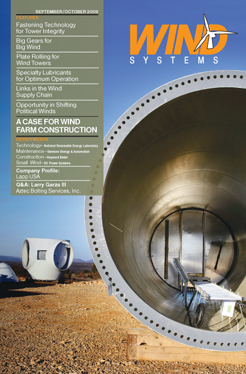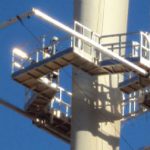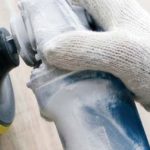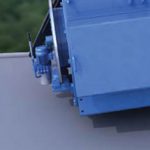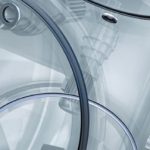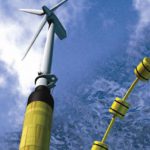Wind turbines have seen rapid development during the past few years, and lubricants are of particular importance in this context. Lubricants play a vital role in ensuring the components conform to the required operating times. Standard lubricants are often unable to keep up with the ever-increasing performance requirements. This article provides an overview of the specific tribological requirements of wind turbines’ most significant components and the specific tasks to be fulfilled by the lubricants. It shows that the advantages for windmill operators using high-quality specialty lubricants are considerable with regard to reliability, as well as cost-benefit aspects.
The still young technology of wind power plants benefits from tribologists’ experience and expertise when it comes to lubrication, corrosion protection, and maintenance under taxing conditions. Even in today’s widely used turbines with a power output of 2 to 3 MW, conventional lubricants are pushed to their limits. Turbines designed to generate 5 MW pose conditions simply too harsh for the lubricants described in various international standards, not to mention the 10 MW units already being designed.
Still, the role of lubricants is widely underestimated in the wind energy sector, although it has a decisive influence on the performance, efficiency, maintenance requirements, and service life of the equipment. An additional aspect to consider in wind power stations is that maintenance and repair jobs often have to be carried out under adverse conditions. This problem will be aggravated in the high-capacity offshore wind parks that are going to be built, e.g. when unplanned maintenance becomes necessary during unfavorable weather. If conditions are too harsh, a defective component may even mean that the turbine is forced to remain idle for some time—downtimes of several months are quite conceivable. High-grade lubricants can help prevent such failures and extend maintenance intervals. If just a single inspection is rendered unnecessary, this will more than compensate for the total lubricant costs arising during the entire service life of a plant.
Lubricating Wind Turbines
When choosing a lubricant suitable for a particular wind power plant, the operator has to consider several important factors. Bearing greases, for example, should be easy to pump and allow precise metering in centralized lubricating systems, thereby attaining a good grease distribution. Good wear protection even under vibration increases the bearings’ lifetime during periods of idleness, the so-called “false brinelling” is always a major cause for concern. Also, when the power station runs at low speed, wear is provoked due to the lack of a sufficient hydrodynamic lubricant film. A good lubricant must contain suitable additives to counteract these effects. Finally, it has to be ensured that the lubricant is compatible with the elastomers involved and covers the wide service temperature range of -40 to 300 °F. (With the operating temperature being approx. 190 °F, a service temperature range up to 300 °F results in extended relubrication intervals.).
Different Bearing Requirements
The essential bearings of a wind power plant—main bearing, generator bearing, yaw bearings, and pitch bearings—operate under very different operating conditions and therefore pose very different requirements regarding lubrication. The main bearing rotates slowly but is subject to high loads and vibration. The generator bearing, by contrast, needs to cope with high speeds and high temperatures. Pitch and yaw bearings are subject to high loads as well, but they also perform oscillating motion under strong vibration.
Due to these varying requirements, wind power plant operators have often had to resort to a variety of greases up to this point. In addition, most wind parks use turbines from more than a single manufacturer, so different lubricant recommendations have to be taken into consideration. And most manufacturers offer various turbine models, which are often used in parallel. For the operator this means that he has to spend a lot of resources on logistics, storage, and grease disposal, plus an increased risk of lubricants being mixed up. Most turbines are still lubricated manually, so service technicians have to carry a variety of lubricants. Another problem is that not all lubricants are available worldwide, at least not in the same quality.
One Grease Solution
Meanwhile, a special-purpose bearing grease for wind power plants has been developed and proven in practice. The individual bearings, with their different requirements, can now be served by a single product without sacrificing lubrication performance. Its wide service temperature range from –40 to 300 °F is a decisive factor for the problem-free operation of wind power plants: As a specification for use in their plants, most manufacturers stipulate -20 °F, so the new grease leaves a sufficient safety margin. The same applies to the upper temperature range, because even in the fast-running generator bearing the maximum temperature is approx. 190 °F. Thanks to this margin, the aging of the grease will be inhibited, relubrication intervals can be extended, and the operator is left with enough flexibility to schedule maintenance to periods of lull. The wide service temperature range from -40 to 300 °F is to be attributed to the special mixture of synthetic and mineral base oils; a product containing only mineral oil would not be able to cope with such temperatures.
Moreover, the special grease offers good compatibility with all elastomers commonly used for the making of seals. Comprehensive tests have shown that the characteristics of plastic materials, when in contact with this lubricant, change only to a degree that is within the permissible limits. Furthermore, the grease mixes extremely well with other bearing greases, which makes for easier lubricant changeover.
On the whole, this “one grease solution” allows a reduction of unplanned maintenance and downtimes due to bearing damage, leading to a considerable increase in plant productivity. The operator’s repair and spare parts costs can be cut down, as can be the expenses for storage and the disposal of used greases.
Open Gear Drives
Other demanding points to lubricate in wind turbines are the open slew ring and blade pitch gears. While the turbine is running, the lubricant tends to slowly move outward along the tooth flanks, giving way to increasing wear on the teeth and producing stains on the unit when it eventually drops from the gears. For this application a speciality lubricant with a high load-carrying capacity and good adhesion even at very low temperatures is required, which ensures reliable protection against wear and much less staining of the unit.
Gear Oils
As interest in the wind industry grows, engineers are working to improve the efficiency and the output of wind turbines. Gearbox designs contain more equipment designed to produce greater output, and more output means the generation of more heat in the gearbox. As a result, lubricants must function at higher operating loads while helping to reduce temperatures in the gearbox. In addition, plant operators require prolonged oil service life and grease relubrication intervals. The gear oil in a wind turbine is typically changed after as many as 25,000 to 50,000 service hours.
Today’s widely used commodity gear oils as defined by various standards do not always meet expectations in terms of wear protection, micro-pitting resistance, foam, and residue formation. Gear efficiency is determined to a large extent by the friction characteristics of the lubricating oil. As test rig results show, there are synthetic gear oils that reduce temperatures and power losses considerably compared to standard gear oils. Just to give a few figures: The biggest increase can be realized in gear types that are challenged in normally lower efficiencies such as worm drives. Klüber’s worm gear test rig e.g. runs at approximately 60 percent efficiency with a mineral oil. With a PAO gear oil, efficiency goes up to 70 percent and with a polyglycol oil it rises to 78 percent. As the efficiency increases, the temperature of the gearbox drops. This decrease in temperature increases the life of the gear oil, the seals, and the gearbox as a whole. This may not sound like a big deal if you have one or two gearboxes, but if you have hundreds of gearboxes that energy usage really adds up—even though, in the main gear systems used in wind turbines, the efficiency rate increases attainable are not that high due to the gear type. Tab. 1
Specialty Lubricants
The total cost that can be incurred by failure of a component in a wind turbine—be it a bearing, an open drive, or a gearbox—should not be underestimated. It is not only material and labor costs for replacing the damaged component that have to be taken into account. The time it takes for a new component to be delivered may leave the wind power plant idle for some time, which means that the costs will rise sharply. But costs will actually soar if, for example, due to a damaged generator bearing the rotor and the stator of the generator come into contact, and the generator itself has to be replaced. All this may add up to significant amounts of money. By comparison, the purchasing costs for high-performance lubricants are all but negligible. Furthermore, these specialty products help to substantially improve operational reliability, avoid unplanned downtimes, and increase the efficiency of wind power plants.



















